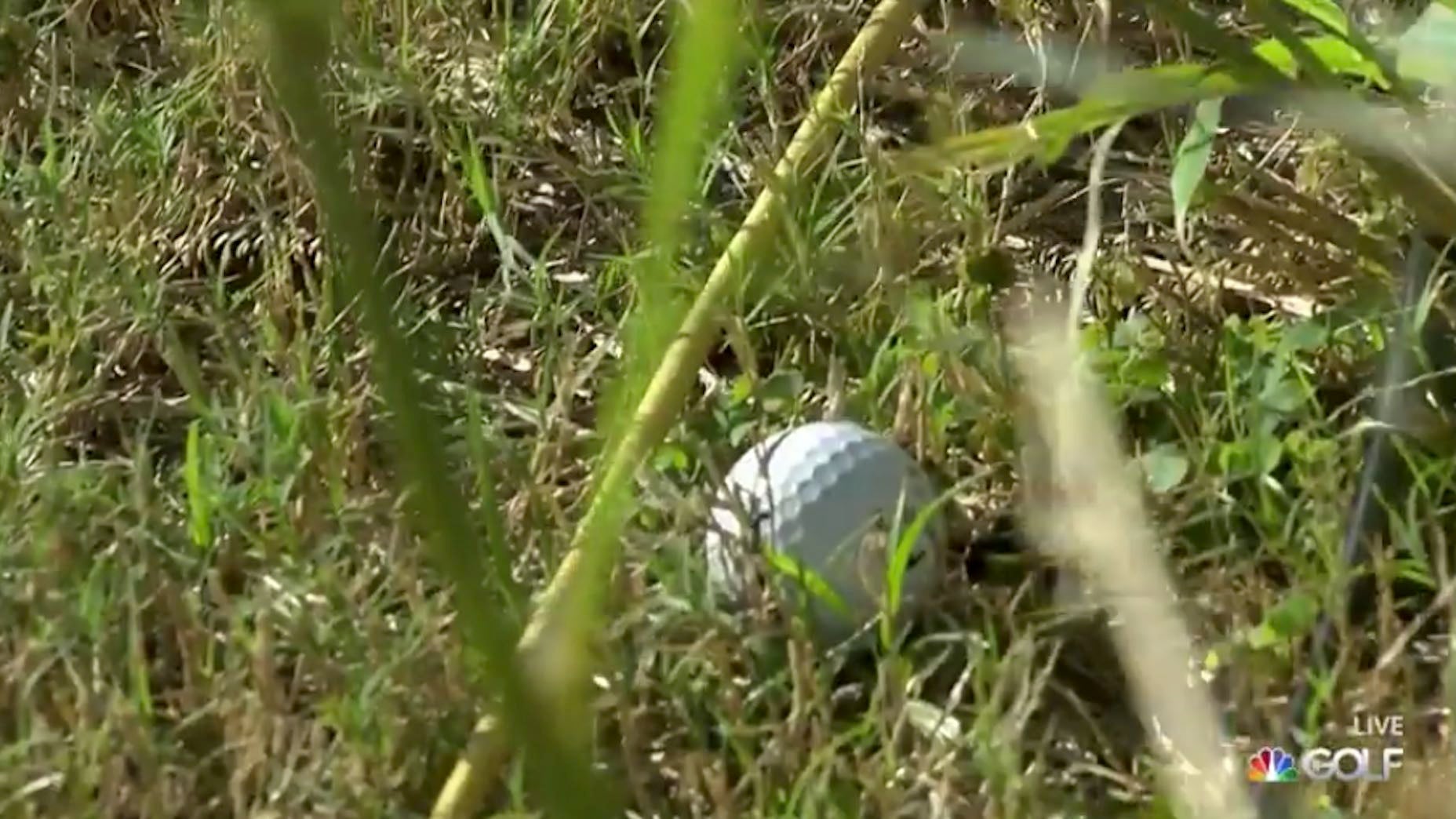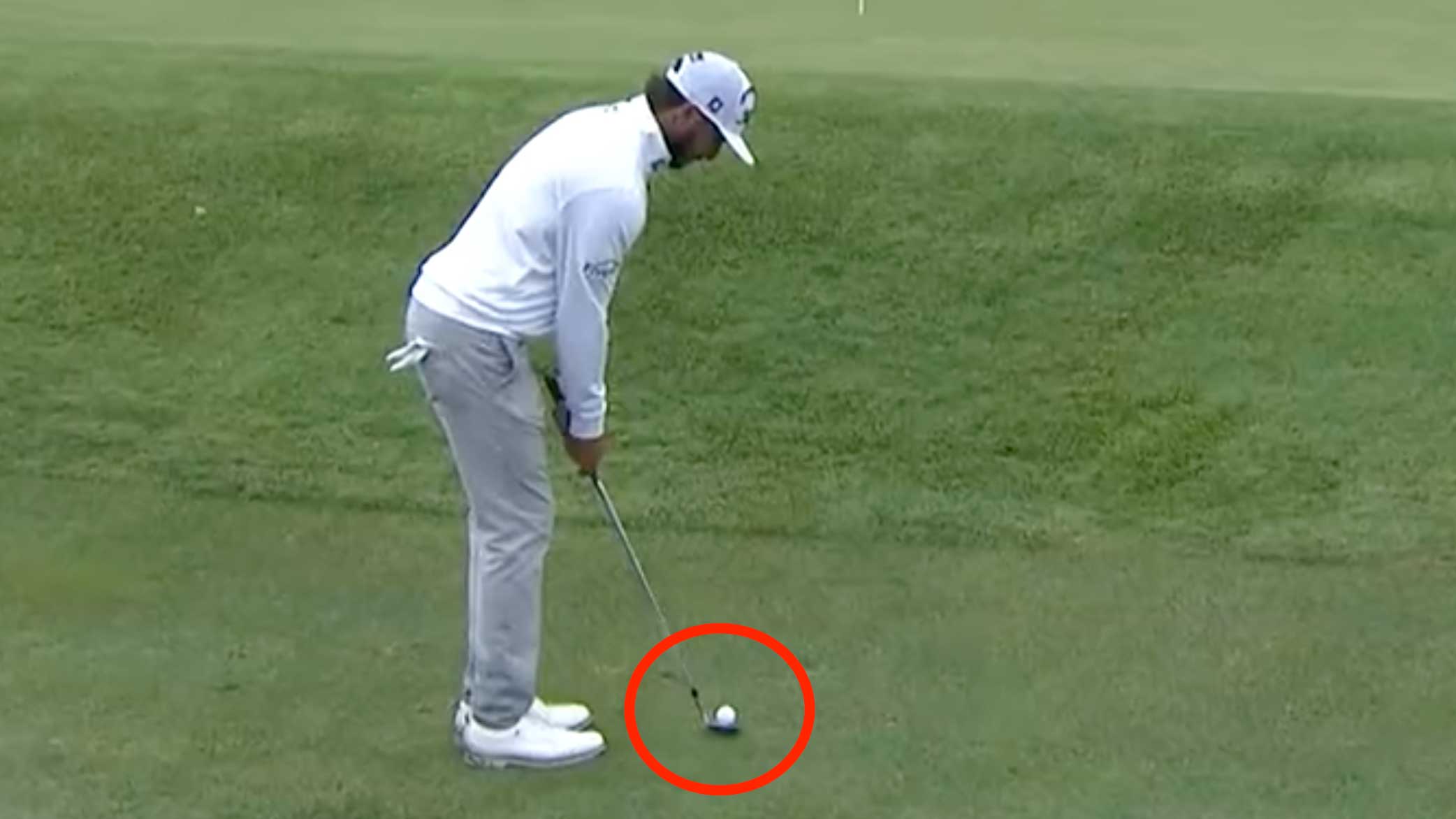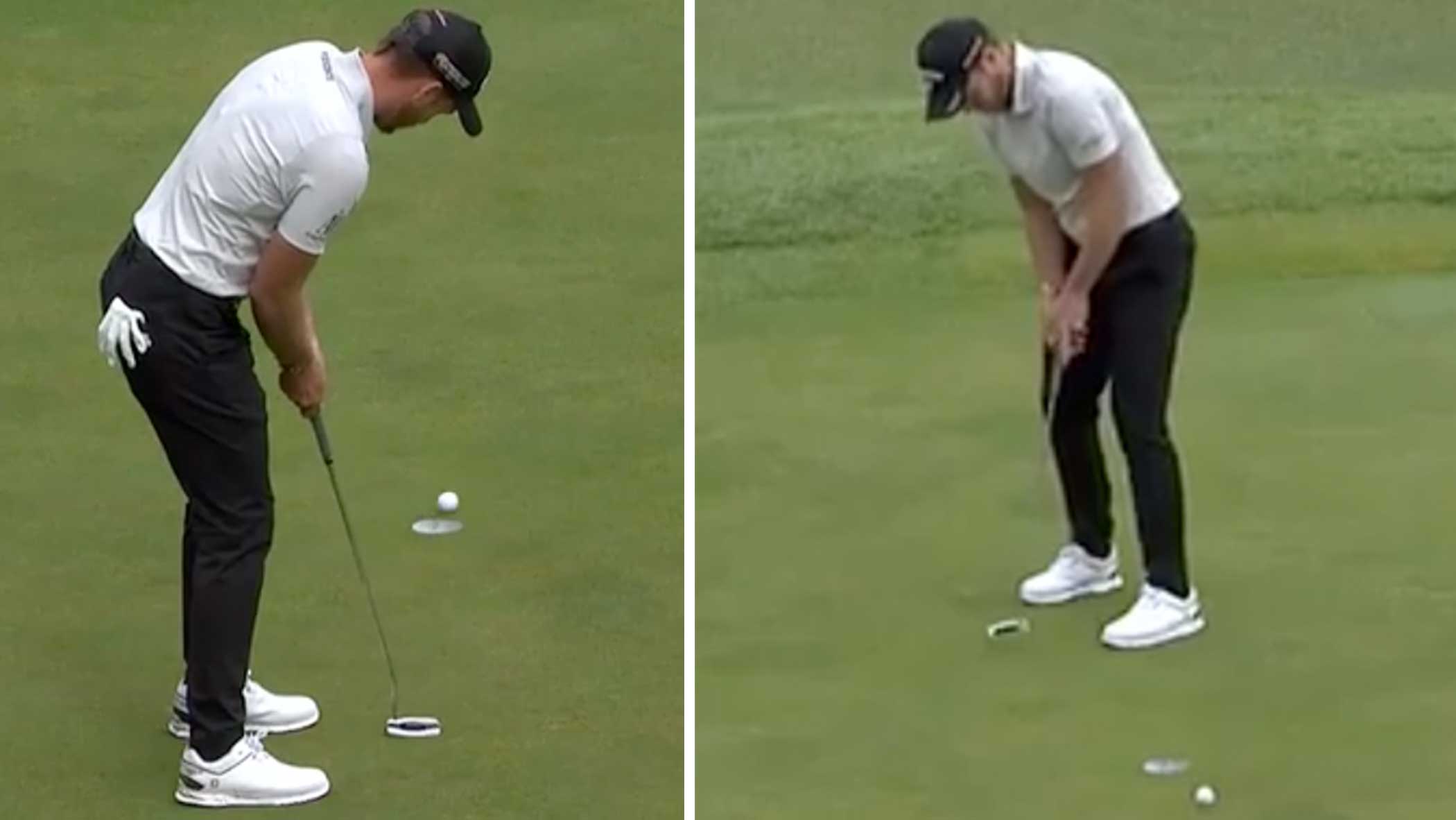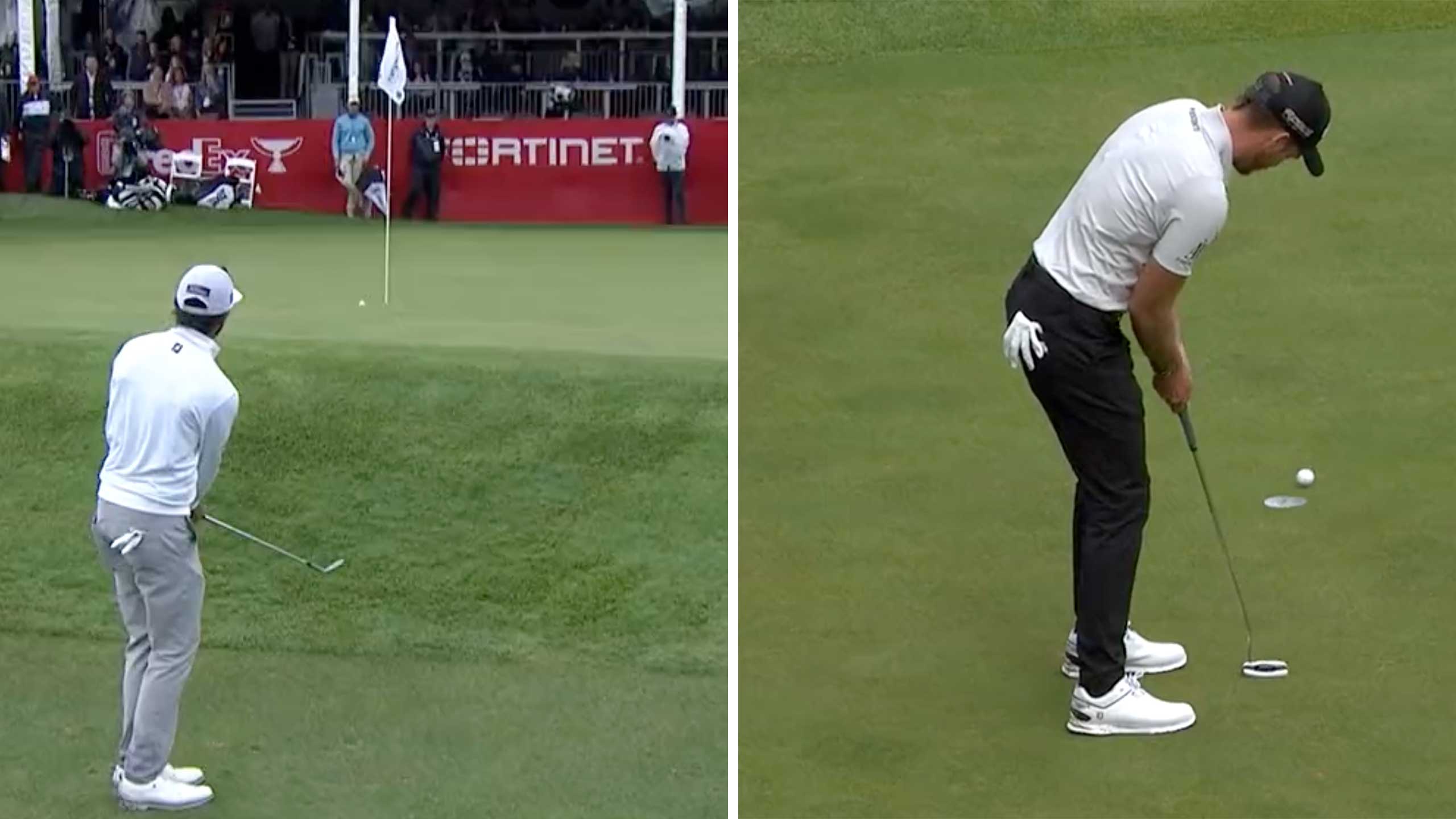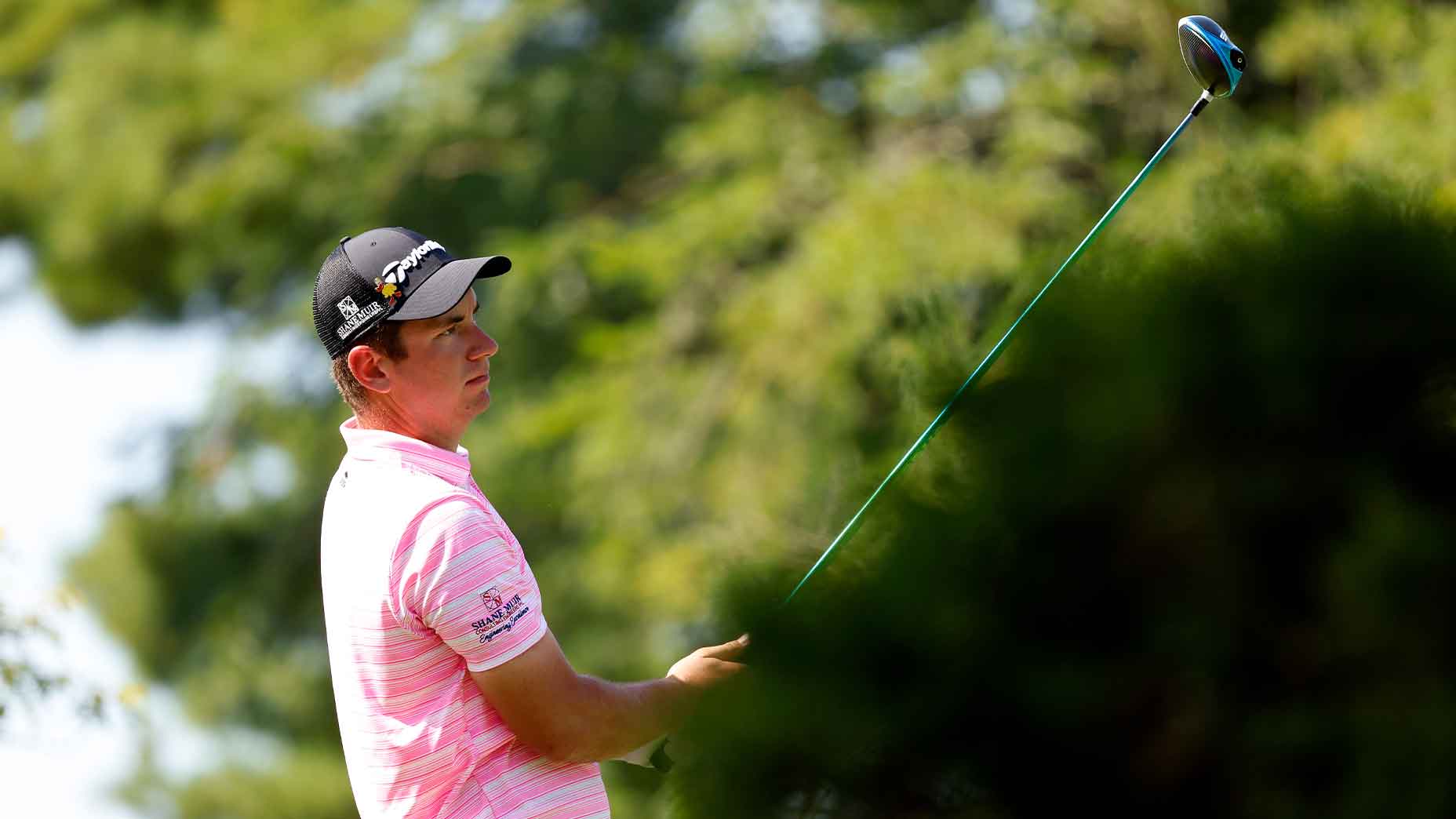Danny Willett’s Callaway came to rest on the left side of the 10th hole at Port Royal Golf Club, sitting on the very edge of the boundary between the course and the neighboring property.
The matter of whether Willett’s ball was inside or outside the boundary was of extreme significance. Sitting at one over par on the difficult first day of the Butterfield Bermuda Championship, he’d taken an aggressive line off the tee, cutting the corner on the short par-4. If his ball was ruled in bounds, he’d be chipping down toward the flag for eagle. Out-of-bounds and he’d be back to the tee to replay the very shot he’d just hit.
Willett was giving the matter his full attention as Golf Channel’s cameras joined his group.
“If there was a white line drawn here…” he began. Anyone who has played golf knows this helpless feeling, somewhere between “denial” and “bargaining” in the stages of grief. Surely he couldn’t be this unlucky. Surely his ball couldn’t be out of play by this slim a margin.
‘You couldn’t physically walk’: Wild winds create chaos on PGA TourBy: Dylan Dethier
“It is the inside edge,” the PGA Tour official replied, referring to the inside of the stakes, demarcating the O.B. line.
“But if you drew a white line, the line would obviously be, if it was the width of the post, the ball would be on it,” Willett said. “But it’s not the width of the stake, is it?”
“No,” the official replied. He took a closer look. “It’s out by, I’d say — it’s out by about an inch.”
Willett was understandably miffed. Out-of-bounds rulings are golf’s most painful because they’re penalized so harshly, and they’re even more painful in a situation like this, where Willett actually had a reasonable swing at the ball. He returned to the far stake for another peek down the line, just to make sure.
The scenario raised an important question for anyone who ever hits a ball off-line: How is O.B. measured, anyway?
For one thing, it’s not always particularly glamorous — even on the PGA Tour. Here Willett and the official had a TV cable stretched from one pole to the next. (Other weeks, officials will travel with lengths of string to accomplish the same thing.) If there’s a line on the ground, that’s the official line. If there are merely stakes marking the boundary line, you do your best to draw a line between them.
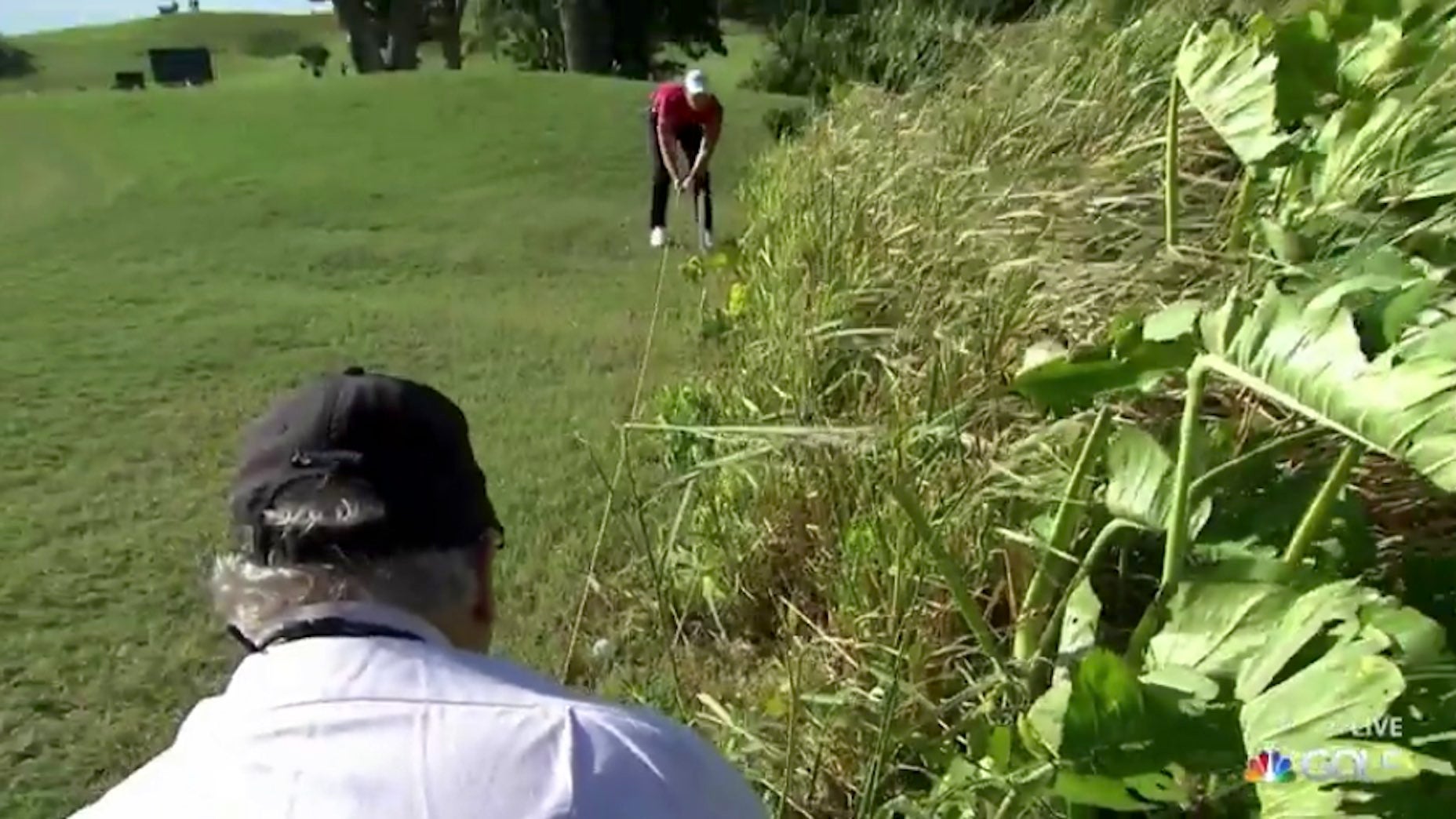
The good news for players is that when taking this measurement, if any part of your golf ball is in bounds (on the course side of the line) you’re in play. Think of it like a football player trying to break the plane of the end zone. Once you get the nose of the ball across, you’re in business.
The bad news for players is that the line in question starts at the “course-side” of the stakes. The USGA calls those “boundary objects.” So if you have a string and you’re using it to measure the boundary line, you’ll have to measure on the in-bounds side of the stakes, rather than the out-of-bounds side.
Here’s how the USGA defines it:
When defined by stakes or a fence, the boundary edge is defined by the line between the course-side points of the stakes or fence posts at ground level (excluding angled supports), and those stakes or fence posts are out of bounds.
It’s a silly, minute detail, right? But for Willett, it was the difference between hitting his second shot from the rough and hitting his third shot off the tee.
This is more detail than you need, but while we’re at it: That boundary extends down below the ground and up into the air, so if your ball is embedded below the surface, you measure it where it lies. And if your ball is stuck in a tree, same deal. You might be out of bounds in three dimensions.
For Willett, the re-measurement confirmed what he had already feared: his ball was on the wrong side of the stake. It didn’t matter that it was merely an inch outside; the penalty would have been the same had he missed by 100 yards.

Willett grimaced at his caddie, who pulled driver from his bag and handed it back to him as he stepped aboard the cart of that same official, who took him back toward the tee, no doubt wishing he had hit his previous shot two inches farther right.
